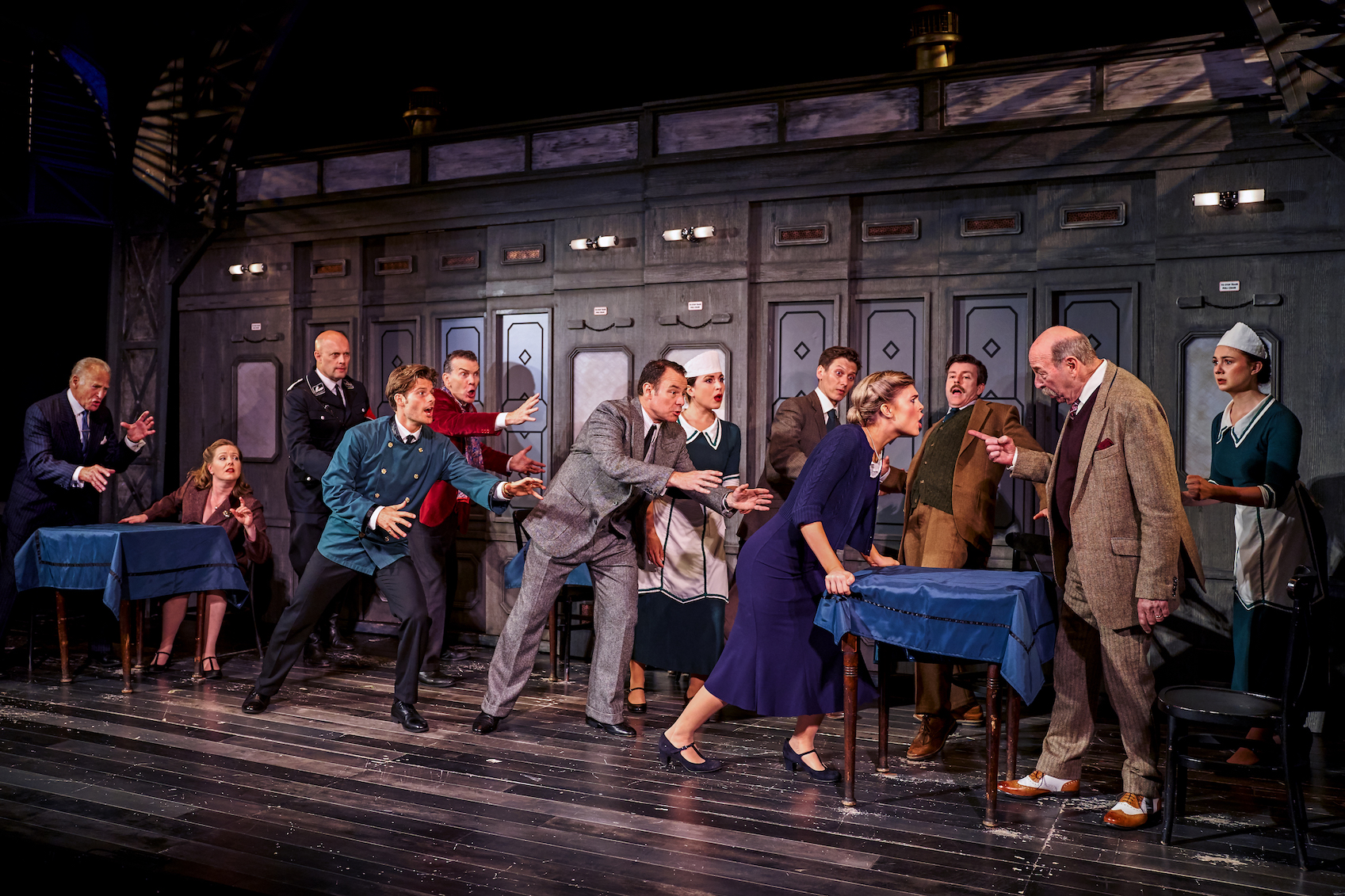
Theatre Review: The Lady Vanishes
connor sturges head to fairfield Halls’ Ashcroft Playhouse as Hitchcock’s ‘The Lady Vanishes’ makes the transition from screen to stage.
As plumes of dry ice fill the space, banners emblazoned with the infamous Nazi swastika are unveiled and various silhouettes fill the stage – the mystery begins.
Based on the 1938 piece of cinema that propelled director Alfred Hitchcock to stardom (he relocated to Hollywood shortly after its release), this is one production few would envy having the task of transitioning from screen to stage.
The opening scene centres on the German train station from which the journey begins, with both action and character profiles building as they prepare for their return to ‘Blighty’.
A mismatch of ethnicities go about their business as Iris (Scarlett Archer) is emphasised as an initial central character. Swastika-clad officials charge as tourists scuttle about, whilst a bump on the head from a clumsy luggage porter provides some further depth to the plot when Miss Froy (Gwen Taylor) seemingly vanishes without a trace.
Following the disappearance of ‘the British woman in tweeds’ whom no-one will confess to having seen previously, joint protagonists Iris and Max (Nicholas Audsley) embark on a quest to discover the truth. Stage combat, disappearing fiends, overbearing officials and a suspicious stewardess supply the necessary conflict and confusion on their mission to find Miss Froy.
Whilst there is no attempt to disguise the carefully choreographed nature of the stage combat and it could certainly be more fluid, the performer’s necessity to remain within the imaginary confines of a narrow train carriage, surrounded by baggage, largely excuses this. Well-timed ‘donks’ as characters are successively knocked unconscious and believable disappearances from the likes of Signor Doppo (Martin Carroll) also draw some focus away from the slapstick-style skirmishes.
The main strengths are in the sub-plots, as we see two bumbling Englishmen largely unaware of the commotion around them as a result of their appreciation for half-remembered anecdotes and cricket, and a lady who has left ‘everything behind’ to escape with her older lover. Such characters draw laughs from the audience amidst the drama and suspense and allow for audience empathy where it would otherwise be undeserved when tragedy strikes.
The Classic Thriller Theatre Company’s take on the critically acclaimed movie certainly wouldn’t have caused too much grief for the design team, with only stations and trains necessary settings for the plot. There is a flea-ridden fictional hotel right of stage at the starting point, but the action revolves around the journey itself, with descriptions of out-of-carriage action also only required once.
This lack of creative scope does create an air of stiffness, whilst there seemed to be many opportunities for the addition of music or background happenings that weren’t seized. However, the acting itself could not be faulted as investable character profiles were developed by the likes of Taylor and Archer, whilst I’m sure we weren’t the only viewers exiting the Ashcroft Playhouse wondering if the English saw their cricket match – and if Margaret told her husband that she may not have been in Margate with the mother-in-law.
In all, the talent of the cast is evident, whilst the intermittently comedic sub-plot does warm the audience slightly. Nonetheless, the occasional stiffness in plot and choreography, and arguable lack of creative possibilities, however unavoidable, prevent this production from reaching its full potential.
⭐⭐⭐
Looking for something a little more light-hearted? Check out our panto round up here!






